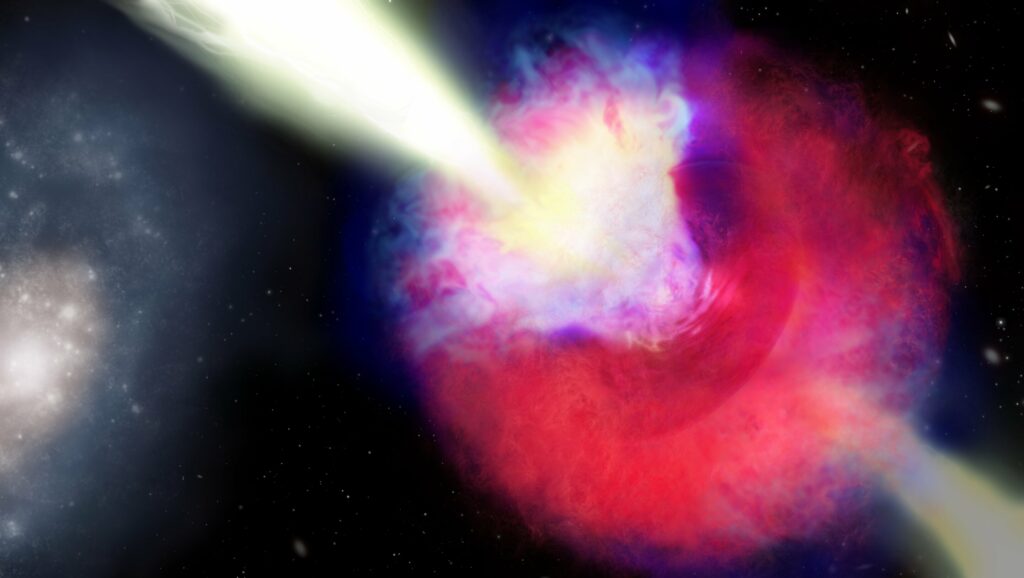Two independent teams of astronomers have published the results of studying a long gamma-ray burst recorded in 2021. Its source was the kilonova, which contradicted existing theories about the nature of such events.
The brightest event in the Universe
Gamma-ray bursts are one of the brightest events in the Universe, during which a colossal amount of energy is released. They are divided into short (lasting less than two seconds) and long (over two seconds). For many years, astrophysicists have believed that short gamma-ray bursts occur as a result of the merger of compact relativistic objects (neutron stars or black holes and neutron stars), and long ones — as a result of the collapse of giant stars, leading to supernova outbreaks.

Abnormal gamma-ray burst
Now these ideas are called into question. On December 11, 2021, NASA-owned Swift and Fermi space telescopes recorded a gamma-ray burst, designated GRB 211211A. Its source was located in a galaxy located at a distance of about 1.1 billion light-years from Earth. The flash lasted over 50 seconds, which made it possible to unambiguously classify the event as a long gamma-ray burst.

However, when astronomers studied the place of the gamma-ray burst more closely, a surprise awaited them. Astronomers have not been able to find any traces of a supernova. Instead, they found the characteristic glow of new elements formed as a result of a kilonova flare that accompanied the collision of two compact objects (most likely neutron stars). Subsequent analysis of the data confirmed this conclusion.
So far, astronomers could not explain how the kilonova was able to generate such a powerful gamma-ray burst. According to one version, the merger of neutron stars could lead to the formation of a single neutron star, which collapsed after a few moments and turned into a black hole. Another assumption lies in the fact that the source of the kilonova was the merger of a neutron star with a white dwarf, which led to the formation of a magnetar.

Another interesting feature of the event is that the kilonova flared up in the galaxy, which is the complete opposite of those in which gamma-ray bursts are usually recorded. It is quite young, actively forming stars, not very massive and at the same time is located at a relatively short distance from the Milky Way. According to the researchers, the discovery may change the approach to choosing galaxies that should be observed during the search for kilonovae.
According to https://noirlab.edu
Follow us on Twitter to get the most interesting space news in time
https://twitter.com/ust_magazine
